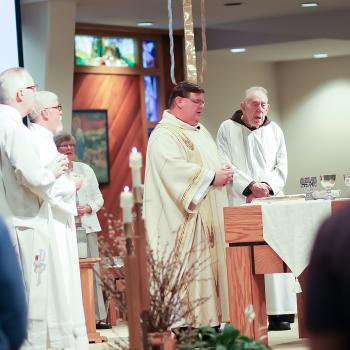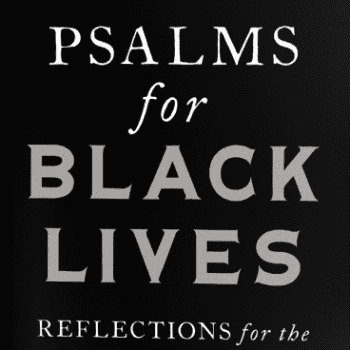Guest blogger Edward McNulty is a Presbyterian minister who has been using films for 40 years in his ministry. Here, he offers some reflections on the new film, The Tree of Life.
“Where were you when I laid the foundation of the earth?
Tell me, if you have understanding.
Who determined its measurements—surely you know!
Or who stretched the line upon it?
On what were its bases sunk,
or who laid its cornerstone
when the morning stars sang together
and all the heavenly beings shouted for joy?
Job 38:4-7
… for he makes his sun rise on the evil and on the good, and sends rain on the righteous and on the unrighteous.
Matthew 5:45b
 It is a bit amazing that Terence Malick’s new film, The Tree of Life, was released during the season known as that of the summer blockbuster. None of the films that he has “written, produced, and directed” since his first, 1973’s Badlands, ever achieved the enormous profits of one of the summer action/super hero movies that audiences love to escape into. Badlands, the story of a couple of young lovers murdering their way from a small South Dakota town to the badlands of Montana, followed the traditional narrative arc, but since then Mr. Malick’s style has evolved into an impressionistic one, the writer/director in Tree of Life almost abandoning a narrative structure for a series of seemingly random shots of the life of a small town family that invites viewers to connect with their own memories of family life—and of the larger context of the cosmos that surrounds us. This is not an easy film to watch, Mr. Malick making no concessions to the viewer, but it is immensely rewarding for those willing to go along with the director. In one sequence he takes us on the most exciting visual ride since Stanley Kubrick’s 2001: Space Odyssey. Indeed, for people of faith, this is a far more exhilarating trip than 2001, thanks to Mr. Malick’s deep interest in matters of the spirit, one that was so manifest in his wonderful war film The Thin Red Line.
It is a bit amazing that Terence Malick’s new film, The Tree of Life, was released during the season known as that of the summer blockbuster. None of the films that he has “written, produced, and directed” since his first, 1973’s Badlands, ever achieved the enormous profits of one of the summer action/super hero movies that audiences love to escape into. Badlands, the story of a couple of young lovers murdering their way from a small South Dakota town to the badlands of Montana, followed the traditional narrative arc, but since then Mr. Malick’s style has evolved into an impressionistic one, the writer/director in Tree of Life almost abandoning a narrative structure for a series of seemingly random shots of the life of a small town family that invites viewers to connect with their own memories of family life—and of the larger context of the cosmos that surrounds us. This is not an easy film to watch, Mr. Malick making no concessions to the viewer, but it is immensely rewarding for those willing to go along with the director. In one sequence he takes us on the most exciting visual ride since Stanley Kubrick’s 2001: Space Odyssey. Indeed, for people of faith, this is a far more exhilarating trip than 2001, thanks to Mr. Malick’s deep interest in matters of the spirit, one that was so manifest in his wonderful war film The Thin Red Line.
The film opens with a dark screen on which is printed a passage from the Book of Job, and then we watch a series of shots of a mother and father enjoying their three young boys. The time is the 1950s, and the place is a small town in Texas. Then, apparently much later, Mrs. O’Brien (Jessica Chastain) receives a telegram. We do not see the text, nor is there any dialogue, but we can tell by her reaction that it must be about the death of one of their sons. Mr. O’Brien (Brad Pitt) receives the sad news at the town’s small airport. Because of the prop noise from a plane we cannot hear his words.
The couple are wracked with grief. We do not see the funeral service, just the church’s stained glass window, a wonderfully spiral-shaped one. We see hands, children’s shadows, and we hear the snatches of the conversations of the would be comforters—“Nothing ever stays the same…You still have your two others…The Lord giveth and the Lord taketh away.” Mr. O’Brien chokingly remarks that there’s no reason for this. Up to this point the film reminded me a little of Rabbit Hole, stylishly very different, but also about parents grieving over the loss of a son. But then comes a lengthy segment that immediately recalls to mind the passage from Job quoted at the beginning of the film (the film’s title doesn’t come on until the end), “Where were you when I laid the foundation of the earth? Tell me, if you have understanding…when the morning stars sang together and all the heavenly beings shouted for joy?” (Job 38:4,7)
These were words spoken by God to a man who was not only filled with grief, but also protesting the unfairness of what had happened to him. We are in the land of calamity unfairly befalling the innocent, explored in a very different vein by the Coen brothers in their A Serious Man. The flame-like image that the film began with introduces this new sequence, taking us on a ride through the history of the universe, thanks to the fine special effects work of 2001’s Douglas Trumbull. The big bang. Stars, nebulas, and galaxies. Suns and planets. The watery earth and erupting volcanoes. The beginning of microscopic life. Fish (lots of hammerhead sharks) and other sea creatures. Plants and mountains. A small dinosaur hops through the forest and along a river. It stops when it sees a fallen dinosaur. It places its foot upon the creature’s head. We expect to hear a crack or squishing sound, but it lifts its foot off and moves on. Could this be the beginning of compassion, even at this early stage in the evolution of life? Then comes a cataclysm that even the mighty dinosaurs cannot survive.












